SQM Research released its rental vacancy rate for May, which fell 0.1% over the month to a historically low 1.2% nationally—the same level as last year.
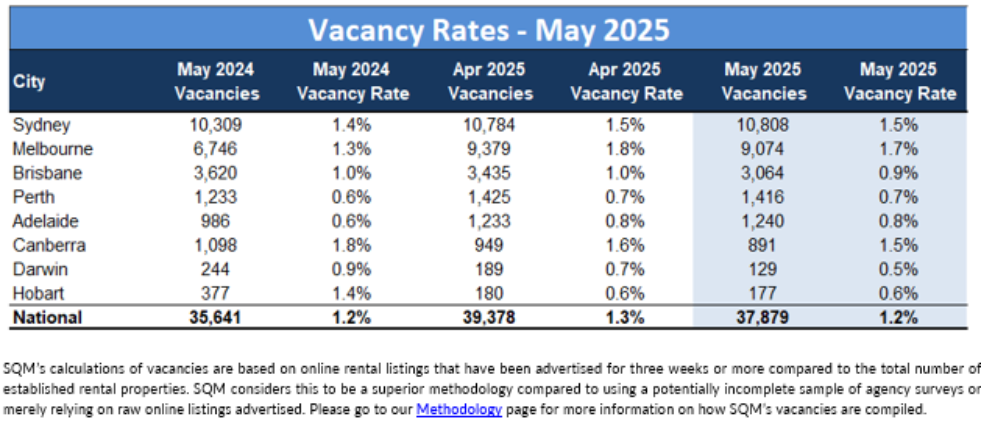
While all markets are tight, Sydney (1.5%) and Melbourne (1.5%) have significantly higher vacancy rates than the other capital cities, which are all tracking below 1.0%.
Nationally, the rental vacancy rate is tracking at around half the pre-pandemic level, according to SQM:
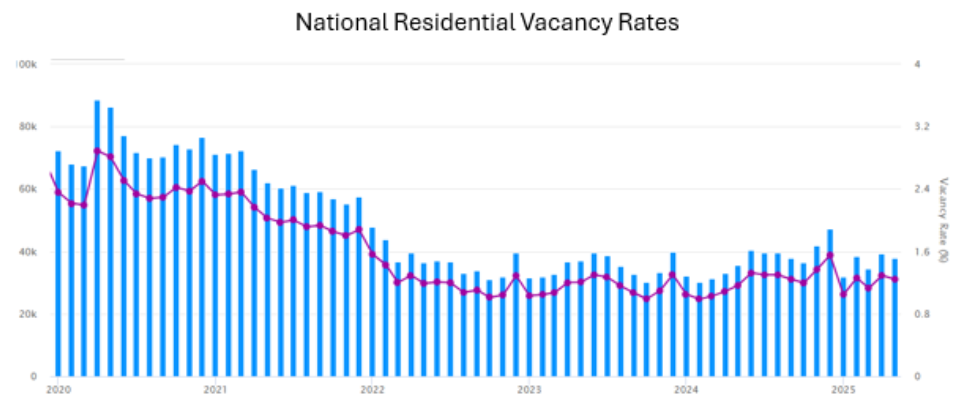
Source: SQM Research
Justin Fabo from Antipodean Macro shows below that while unit rental growth has moderated, asking rents have experienced massive growth since borders reopened in late 2021:
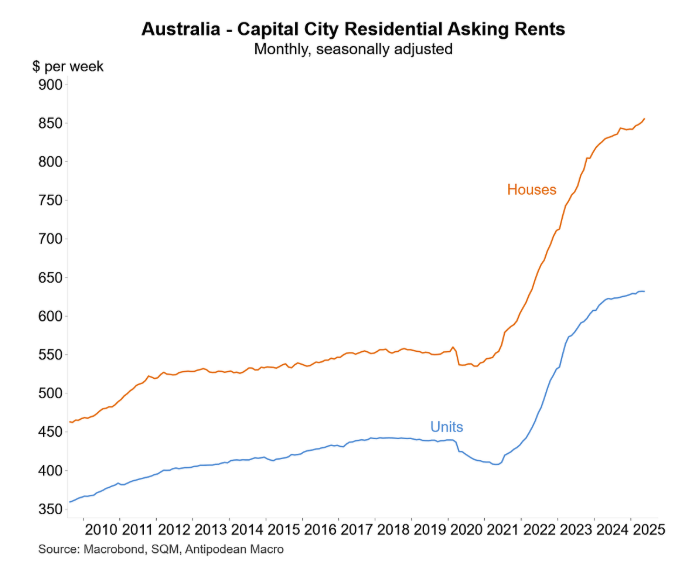
Commenting on the results, SQM Research managing director Louis Christopher predicted that the rental crisis will be ongoing:
“Overall rental vacancies remained steady from April to May. Rental growth also remained steady but continued to be elevated given the ongoing shortage in the rental market”.
“We are likely to have ongoing elevated rents for a long period of time, until we have equilibrium between tenancy demand and rental supply”.
“That’s not likely to happen until such time as we see a slow down in population rate and a meaningful increase in new dwelling completions”.
Indeed, the latest forecasts from the National Housing Supply and Affordability Council (NHSAC) suggest that new dwelling construction will remain depressed, badly missing Labor’s 240,000 annual housing target:
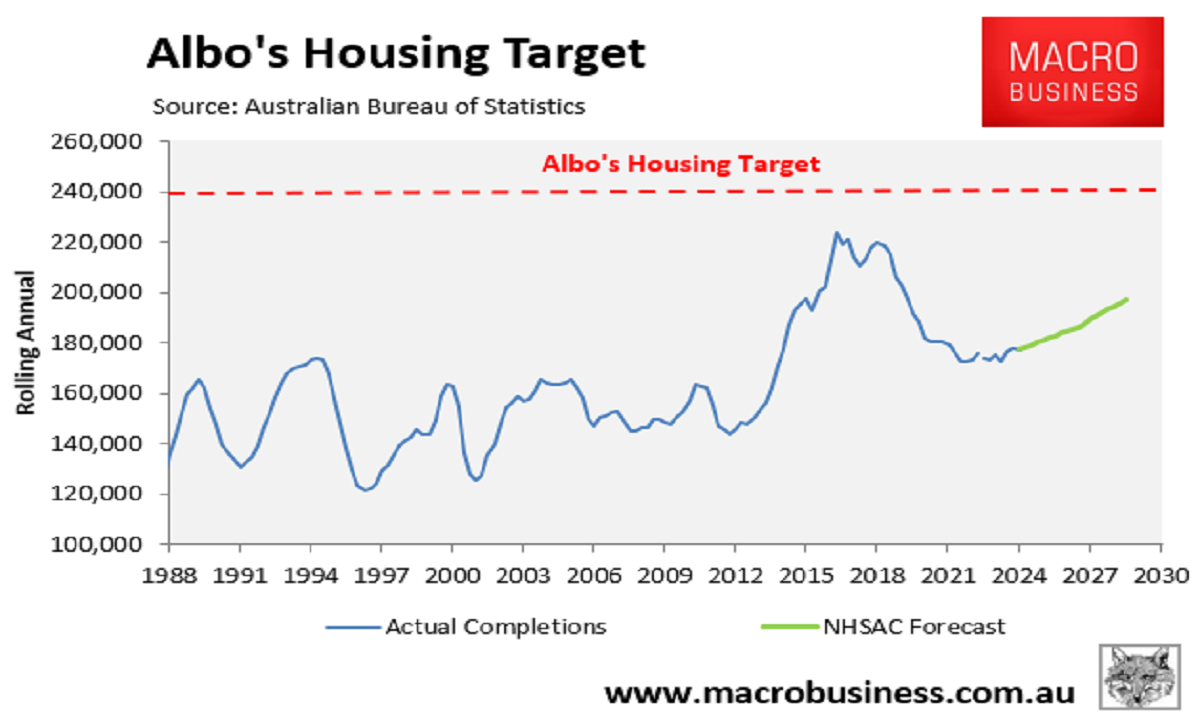
NHSAC also forecast ongoing strong population growth via historically elevated net overseas migration:
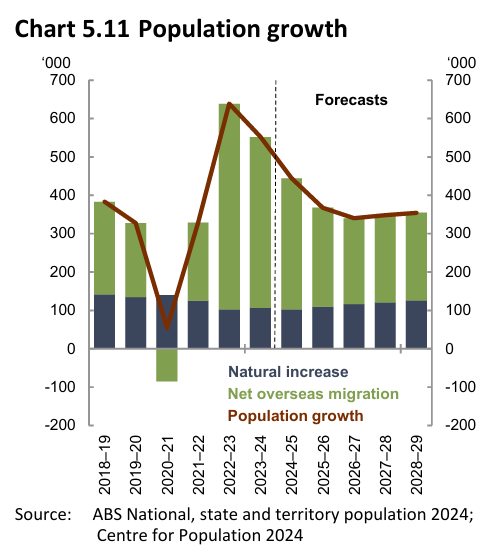
As a result, NHSAC forecast that Australia’s housing shortage will worsen by 79,000 dwellings over five years:
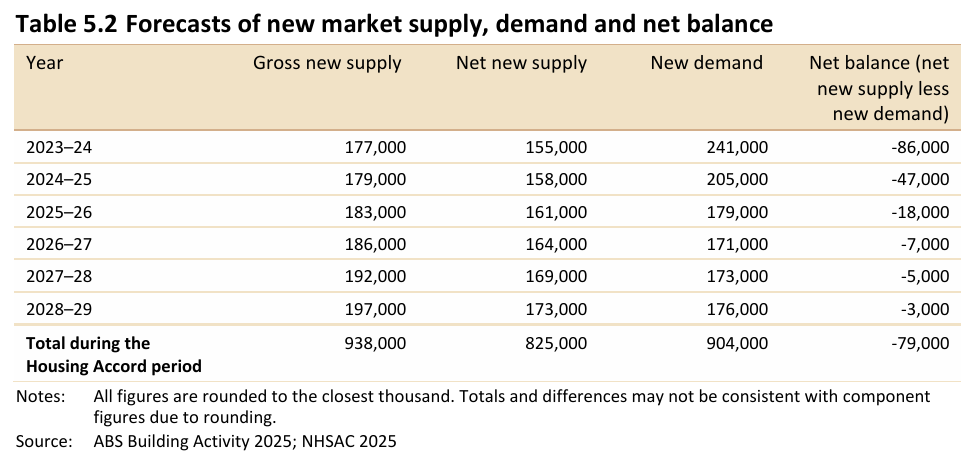
NHSAC, therefore, forecast that the rental crisis will persist:
“The excess of new demand relative to new supply over the Housing Accord period will worsen the existing undersupply of housing in the system and add to affordability pressures”…
“Rental housing will remain scarce for households across the income spectrum as the vacancy rate remains below its historic average”.
NHSAC’s sensitivity analysis showed that if Australia’s population grew by just 15% less than forecast over the next five years, then Australia’s projected 79,000 shortage would turn into a 40,000 surplus:
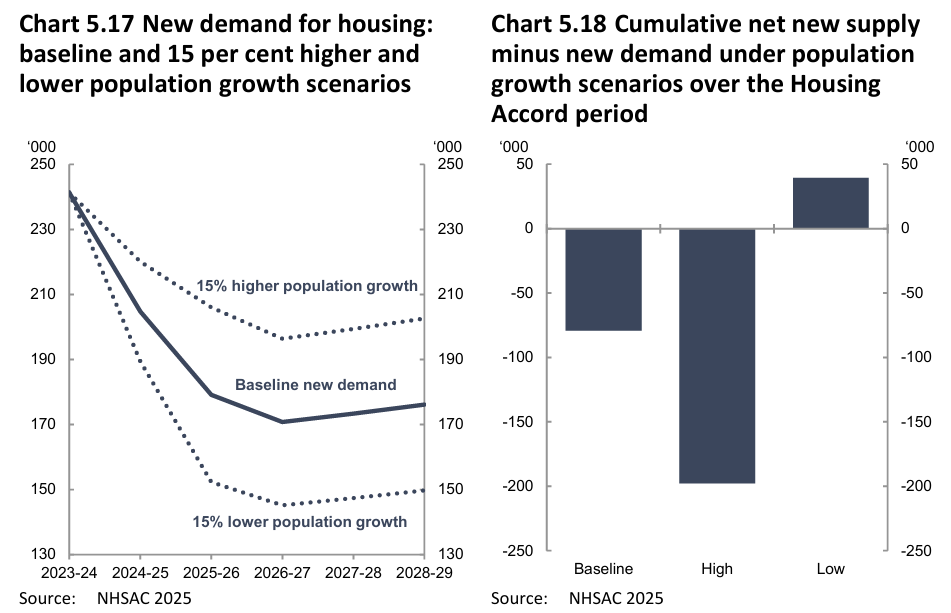
While a lack of supply is blamed for Australia’s housing crisis, NHSAC’s report proves that the primary solution is to cut immigration.

